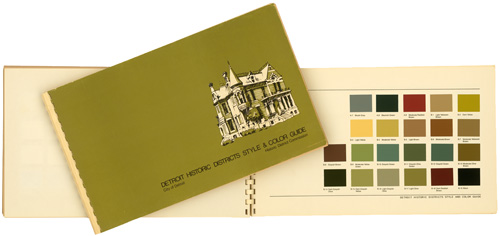
 Color
Consultations
Color
Consultations
LCA Associates has had a major impact on the way American buildings––both residential and commercial––are perceived. As the leading advocates for repainting in historically appropriate colors (see publications), the partners have personally assisted hundreds of building owners across the United States to select historic color combinations and place them appropriately. Their lectures and books are designed to walk homeowners through the process of preparing surfaces to be painted, selecting color combinations that are appropriate for the age, style, and geographic location of the building, and placing the colors correctly to bring out the intended features. Occasionally, however, owners prefer an on–site consultation which can be individually scheduled. To save travel and lodging costs, several property owners (or one owner with several properties) sometimes contract for on–site consultations wherein color schemes and placement diagrams are developed for several buildings in a town, neighborhood, or along a single street.
Historic District Color Guidelines
Approved and documented colors for use within historic districts can be controversial, even in communities such as Charleston, SC, and Nantucket, MA, where the concept of color review enjoys wide–spread property owner acceptance.
Many communities have adopted color palettes by LCA Associates, most notably based on the Sherwin–Williams Heritage Colors developed by Roger Moss. Unfortunately, Sherwin–Williams over time altered or discontinued some of the original Heritage Color line and added others not approved by LCA Associates. The only way to avoid such commercially–motivated variations is to have a community–specific line of approved colors which are based on standardized colors (such as the Munsell Color System) which will not change at the whim of a commercial manufacturer, but can readily be mixed by local paint retailers representing a brand favored by the community. LCA Associates will develop a palette tailored to the age and architectural styles of your community. Since each historic district color palette is unique (even when based on commercially available colors), the colors can be named by the local authority.
Community guidelines can be fairly modest, or, as in the case of Detroit, Michigan, more formal. The Detroit Michigan Historic District Commission, for example, engaged LCA Associates to work with local architects to develop a Detroit Historic District Style & Color Guide which was published in an inexpensive spiral–bound book format [see illustration] to provide guidelines by architectural style, date, and approved color combinations.
In the case of Bridgeton, New Jersey, low and moderate income home owners living within this economically challenged South Jersey community with a large historic district were offered free paint by the City providing they followed guidelines developed by LCA Associates. Funding came from Housing and Urban Development block grants. Local officials were trained to administer the system which was used to repaint 150+ privately owned properties, most of which dated from the 1860s through the early twentieth century.